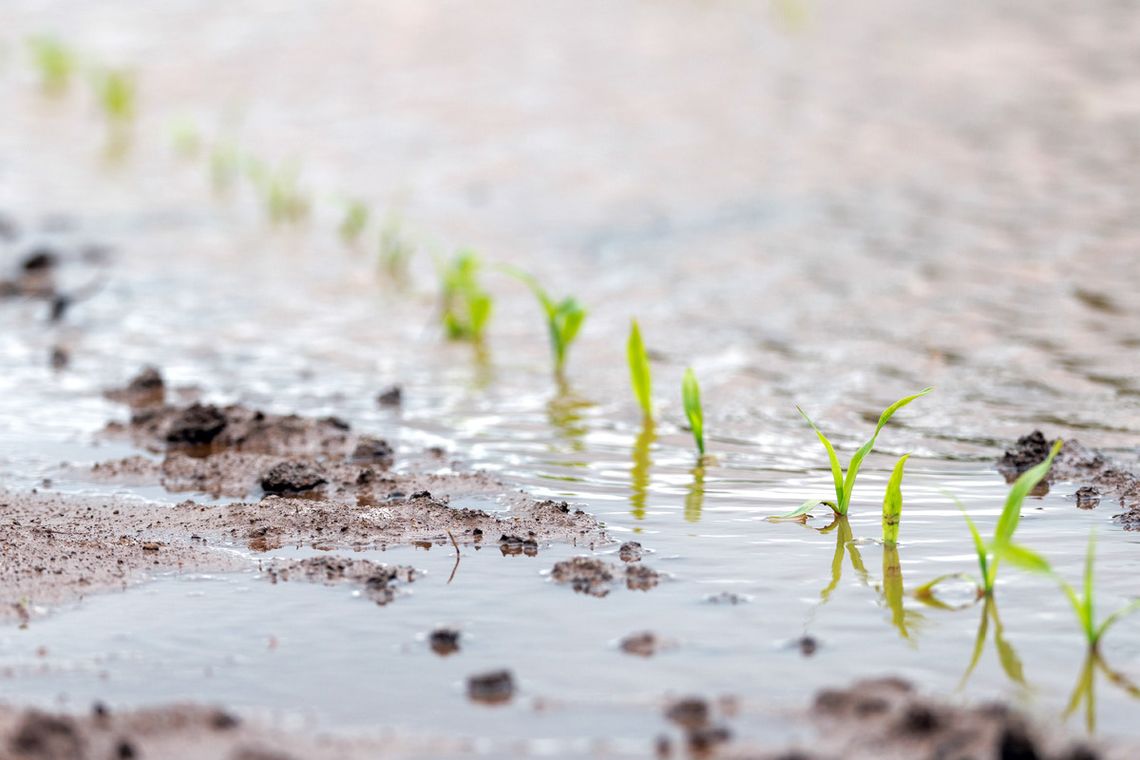By June, Oklahoma gardeners usually encounter parched soil begging for a drink, but the last few weeks have delivered an onslaught of rain in nearly epic proportions. Gardeners are now grappling with how to salvage flowers and vegetables from recordsetting rainfall.
Laura Payne, Oklahoma StateUniversityExtensionhorticulture educator in Payne County, said gardeners can take steps to help their gardens recover.
“Water-logged gardens can be a big issue, especially if you live in a newer neighborhood that had clay soil,” Payne said. “Contractors scraped off the topsoil and compacted the ground in preparation for construction. When new topsoil is brought in, it may be only 6 to 8 inches deep, so that compacted clay layer creates a hard pan layer that water can’t penetrate as it does in sandy or silty soil, leaving the root system of the plant sitting in water for days.”
Adding compost to heavy clay soil can help. Payne suggests new homeowners work on improving the soil in the landscape for a couple of years beforeestablishingpermanent garden beds. Using containers in place of beds can add color and texture to the landscape temporarily until the soil is ready for permanent flowerbeds.
Another issue gardeners may face is droopy leaves or leaves turning yellow. This can cause some confusion among gardeners because these are the same signs of underwatered plants. Despite the abundant rainfall, gardeners may think the plants need a drink, which exacerbates the issue.
“I encourage gardeners to dig around in the soil with their fingers to see how wet or dry the soil is before watering,” she said. “Also, check your sprinkler system to make sure it doesn’t come on when the ground is already saturated. Turn it off manually or install sensors.”
Gardeners who don’t have a lot of plants in the ground can dig up the few they do and put them in containers temporarily until the soil dries out.
If an established bed is in an area known to hold water, choose water-loving plants such as elephant ears, buttonbush, dapple willow, cardinal flower, sedges, rushes and Feather Reed grass, among others. Another option is to amend the soil with compost or other organic matter to increase the drainage capabilities, or consider installing raised beds.
A lot of rain will result in excessive weeds, which, if left unattended, will go to seed and create more weeds. They’ll grow quickly, but the moist ground will make pulling them easy.
“Many gardeners use mulch to help cut down on weeds, which will help suppress weed growth. But, mulch also helps retainwater,”Paynesaid.“Gardeners may need to rake back the mulch from around plants to help speed up the drying process.”
Gardenerswillneedtomonitor for diseases and pests due to all of the rain, said David Hillock, OSU Extension consumer horticulturist.
“Theabundanceofmoisture creates favorable conditions for fungal diseases and certain pests,” Hillock said. “Inspect the plants regularly to stay ahead of problems. If the need for pesticides or fungicides is necessary, follow label directions.”
Another way to boost the survivability rate of plants is to stake or trellis plants that have becomewaterlogged.Thiswill help prevent them from falling over or breaking. Pruning the lower leaves on tomato plants to prevent them from touching the soil helps reduce the risk of diseases.
Also, empty saucers under any containers; the excess water left standing in the saucer can be a breeding ground for mosquitoes. If possible, move the containers under a covered patio during rainy periods until the soil has a chance to dry out.
Something else to consider is emptying containers in the garden that are holding water, including children’s toys and small swimming pools.
“We’re thankful for the rain, but too much can wreak havoc in the garden,” Hillock said. “These tips will help protect gardeners’investmentsoftime and money in the landscape.”



